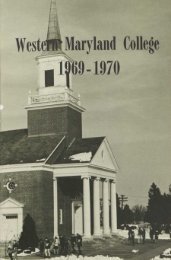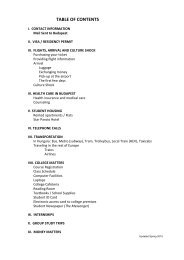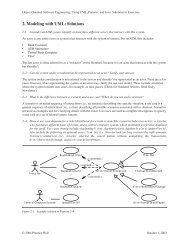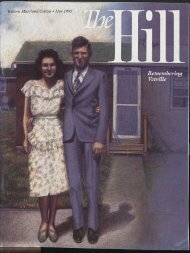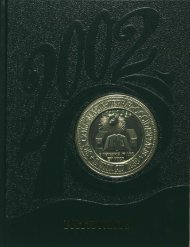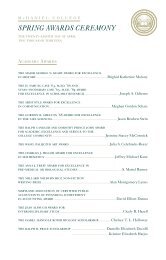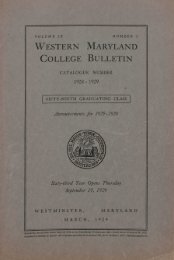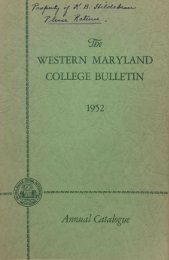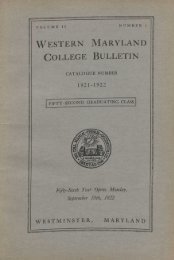You also want an ePaper? Increase the reach of your titles
YUMPU automatically turns print PDFs into web optimized ePapers that Google loves.
of scientists and engineers that our universities producc.Will we find a cure for cancer, for arthritis,for the common cold? It depends upon the facultiesand the graduates of our medical schools. Will westop the Chinese drive for world dominion? It dependsheavily on the pclirica l experts the. uuiversitiesturn out and on the military weapons thatuniversity research helps develop. Will we be ableto maintain our high standard of living and to avoiddepressions? It depends upon whether [he universitiescan supply business and government with invernive,imaginative, farsighted persons and ideas.Will we be able to keep human values alive in ourmachine-filled world? Look to college philosophersand poets. Everyone, it seems-from the impoverishedbut aspiring Negro to the mother who wantsher children to be emotionally healthy-sees the collegeand the university as a deliverer, today.Thus it is no exaggeration to say that colleges anduniversities have become one of our greatest resourcesin the cold war, and one of our greatestassets in the uncertain peace. America's schoolshave taken a new place at the center of society.Ernest Sir-luck, dean of graduate studies at theUniversity of Toronto, has said: "The calamities ofrecent history have undermined the prestige andauthority of what used La be (he great central institutionsof society. .. Many people have turned tothe universities ... in the hope of finding, throughthem, a renewed or substitute authority in life."TNEW PRESSURES to serve the nation inan ever-expanding variety of ways have wrought astunning transformation in most American collegesand universities.For one thing, they look different, compared with15 years ago. Since 1950, American colleges anouniversities have spent about $16.5 billion on newbuildings. One third of the entire higher educationplant in the United States is less than 15 years old.More than 180 completely new campuses are nowbeing built or planned.Scarcely a college has not added at least onebuilding to its plant; most have added three, four,or more. (Science buildings, libraries, and dormitorieshave been the most desperately needed addi-New responsibilitiesare traniformingonce-quiet campusestions.) Their architecture and placement havemoved some alumni and students to howls of protest,and others to expressions of awe and delight.The new construction is required largely becauseof the startling growth in the number of youngpeople wanting. to go [Q college. In 1950, therewere about 2.2 million undergraduates, or roughly18 percent of all Americans between 18 and 21years of age. This academic year, 1965-66, thereare about 5.4 million undcrgraduaces-c-a whopping30 percent of the 18-21 age group ." The total numbel'of college students in the United States hasmore chan doubled in a mere decade and a half.As tWO officials of the American Council on Educationpointed out, not long ago: "It is apparent[hat a permanent revolution in collegiate patternshas occurred, and that higher education has becomeand will continue to be rhe common trainingground for American adult life. rather than theprovince of a small, select portion of society."Of todav's 5.4 million undergraduates, One inevery five attends a kind of college that barelyexisted before World War II-the junior, or Community,college. Such colleges now comprise nearlyone third of America's 2,200 institutions of highe;'education. In California, where community collegeshave become an integral part of the higher educationscene, 84 of every 100 freshmen and sophomorelastyear were enrolled in this kind of institution. By1975, estimates the U.S. Office of Education, onein every two students, nationally, \\ill attend atwo-year college.Graduate schools are growing almost as fast."The pcrct"n1ngl'is sometimes qucreu as b,.ing much hi~h",. becauseit is assumed that ncar-lvall unu.:rl




